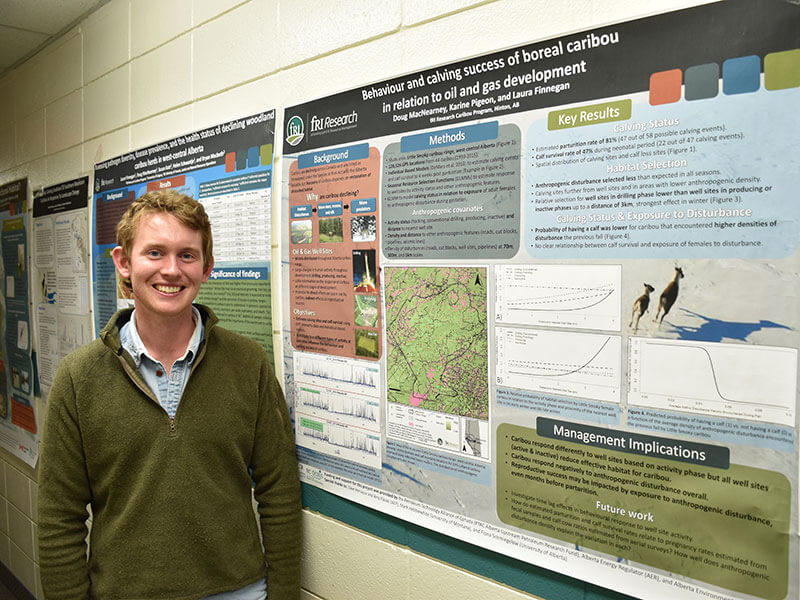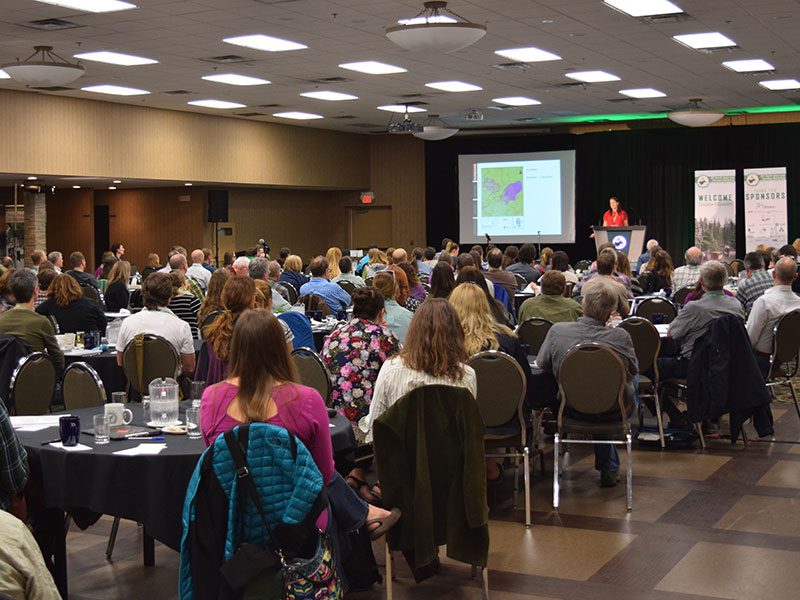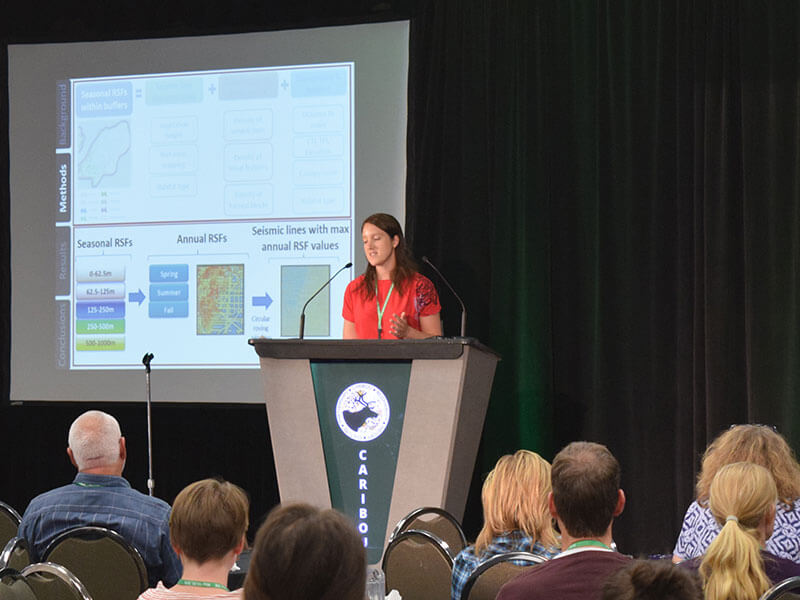The Caribou Program attended the 2016 North American Caribou Workshop in Thunder Bay. Doug MacNearney presented during a the technical session.
Abstract
Anthropogenic landscape change is recognized as an important factor in the decline and extirpation of wildlife populations. We examined how caribou distribution changed over time in relation to (i) anthropogenic disturbance, baseline range, and alpine habitat; and (ii) interannual climate variation (North Pacific Index; NPI).We developed seasonal utilization distributions (Uds) for Central Mountain caribou in Alberta and British Columbia collared between 1998 and 2013. We mapped the cumulative annual density of disturbance features within caribou range and used indices of overlap to determine the spatial relationship and trend between caribou Uds, anthropogenic disturbance, baseline range, alpine habitat, and the NPI. Anthropogenic disturbance increased over time but the overlap between caribou Uds and disturbance did not. Caribou use of alpine habitat during spring, fall, and late winter increased over time, concurrent with a decrease in use of baseline range. Overlap between caribou Uds and disturbance increased in spring and fall following colder, snowier winters, but overall, climate did not explain changes in caribou distribution over time. We provide empirical evidence that caribou adjust their spatial distribution in relation to anthropogenic landscape change, which could have implications for population persistence if distributional shifts result in greater use of alpine habitat during winter.









